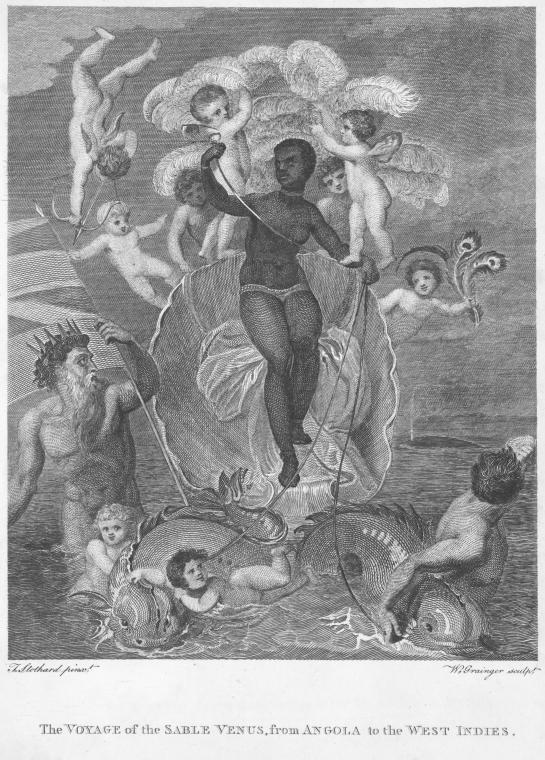Band of Angels (1957), dir. Raoul Walsh, wri. Ivan Goff, Ben Roberts IMDB Wikipedia
Ilsa, Harem Keeper of the Oil Sheiks (1976), Directed by Don Edmonds, Written by Langston Stafford IMDB
Patterson, Orlando. Slavery and Social Death: A Comparative Study. Harvard University Press, 1982 Amazon
I’m still trying to parse out the exact relationship between real-world slavery and the eroticized version we see in the modern BDSM culture. What is the connection?
Django Unchained 2012, writer/director Quentin Tarantino, IMDB
(Spoilers ahead)
Briefly, Django Unchained is about a slave in the Old West, before the Civil War, who is freed by, then partnered with, a German bounty hunter, Dr. Schulz. They set off on a quest (explicitly compared to the German legend of Siegfried/Sigurd) to recover Django’s wife Broomhilda from a plantation known as “Candie Land”.

I’ve officially agreed to edit a collection of essays on the history of Master-slave relationships, commissioned by the Master Taino’s Training Academy.
I’m very excited about this project, as I will help create a contribution to the scholarship of the history of this field, and also get to work with people who have been involved in this subculture from its earliest days. My hope is that this book will have a place on shelves next to classics like Leatherfolk and Different Loving.
This project should run into 2014, at which point I will present the finished manuscript to MTTA for them to either publish themselves or present to a publisher.
We’ve seen a lot of anti-slavery and abolitionist art and other media, but there’s pro-slavery art and media out there too.
Davis, Robert C. Christian Slaves, Muslim Masters: White Slavery in the Mediterranean, the Barbary Coast, and Italy, 1500-1800. Palgrave MacMillan, 2003 Amazon
What you might call “Mediterranean slavery”, of Christian Europeans captured through piracy or raids and enslaved in North Africa or the Near East, coexisted with Atlantic slavery, roughly paralleling the dates. While the numbers about Atlantic slavery are pretty solid, the numbers on Mediterranean slavery are far less so, and Davis is forced to piece together rough estimates from a variety of different sources.
Trying to pin down numbers of Barbary slavery is beyond the scope of this blog, and I don’t want to get into any kind of “oppression Olympics” about different slave economies. (Discussions of white slavery tend to bring out people with an axe to grind. One discussion of Barbary coast slavery on Fetlife included a post with a link to a white pride site. This included lengthy incoherent rants about the place of white people in history. One passage included an array of pictures of tribal people with facial tattoos or body modifications, followed by another array of white people with facial tattoos or piercings. The caption said that these white people took no pride in their heritage and were trying to imitate other races.)
Lott, Eric. Love and Theft: Blackface Minstrelsy and the American Working Class. Oxford University Press, 1993. Amazon
In tracing the long and crooked path from the reality of slavery to the fantasy of slavery, I’ve passed through blackface, or more generally whites imitating blacks.
Blackface minstrelsy was a very complex phenomenon. To begin with, it originated in the North East of the United States, not the South, and it was first performed by working-class whites, often Irish, who were perceived as only slightly above blacks in the grand scheme of things. Minstrelsy was an insulting parody of blacks, and an appropriation of black music, songs and dialect; it was also an expression of working-class whites’ anxieties about their precarious position in society, their resentment at efforts to free the black southern slave while leaving the white northern “wage slave” in the same dependent state.
Fitzgerald, William. Slavery and the Roman Literary Imagination. Cambridge University Press, 2000.
Initially I assumed that classical slavery had very little to do with Atlantic slavery, but subsequent research has suggested that the legacy of Roman and Greek ideas about slavery did inform both period thinking about Atlantic slavery and our modern fantasies about it.
Roman slavery was a very different institution than American slavery. Slaves were ethnically and culturally diverse, and did everything from the most skilled to the least skilled jobs. Slaves could be manumitted, becoming freedmen, and their children were born as citizens. Everybody regarded slavery as a fact of life, and there was no abolitionist movement.
Brooten, Bernadette J., ed. Beyond Slavery: Overcoming Its Religious and Sexual Legacies. Palgrave MacMillan, 2010.
Although Jewish, Christian, and Muslim religious leaders have always recognized the difference between slavery and marriage between men and women, they have sometimes applied concepts from slavery to marriage.
Pg. 8, “Introduction” by Bernadette J. Brooten

